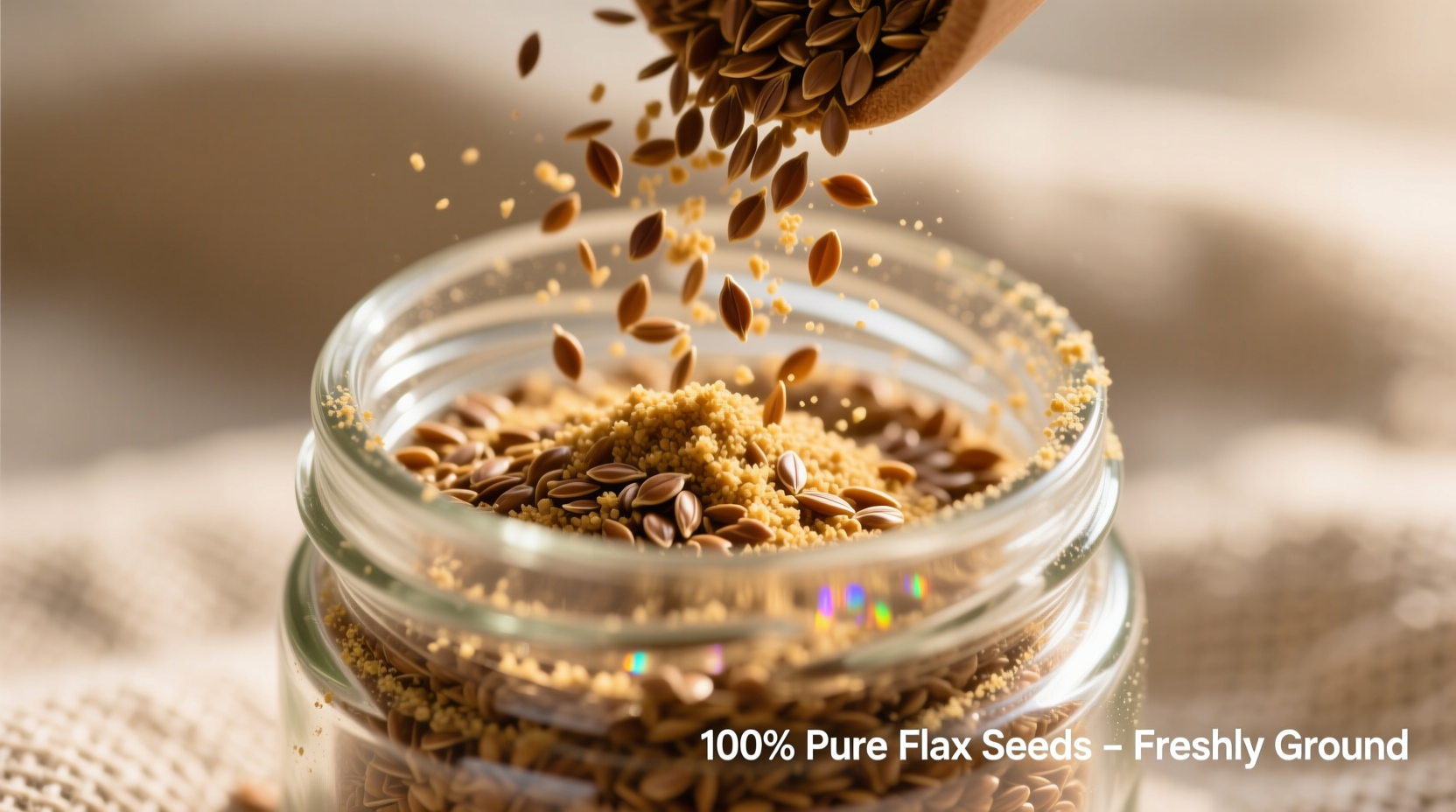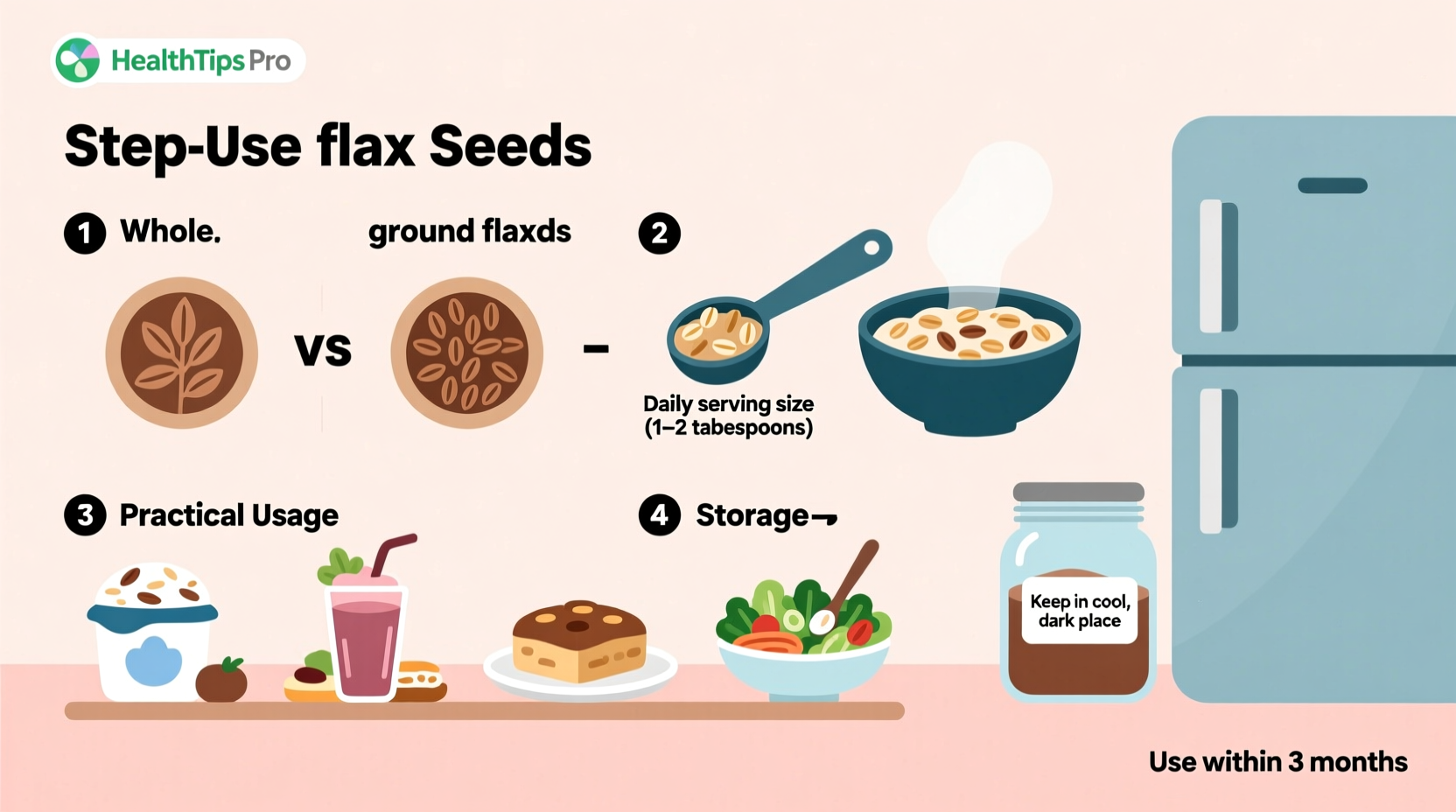Flax seeds pack a powerful nutritional punch when used correctly, but many people miss out on their full benefits due to improper preparation and usage. As a versatile superfood rich in omega-3 fatty acids, fiber, and lignans, flax seeds can transform your daily nutrition—but only if you know how to incorporate them effectively.
Why Ground Flax Seeds Outperform Whole Seeds
Your body can't properly digest whole flax seeds, causing them to pass through your system undigested. Grinding breaks down the hard outer shell, releasing the valuable nutrients inside. Research from the National Institutes of Health confirms that ground flaxseed provides significantly higher bioavailability of alpha-linolenic acid (ALA) and lignans compared to whole seeds.
| Preparation Method | Nutrient Absorption | Shelf Life | Best For |
|---|---|---|---|
| Whole flax seeds | Low (passes through undigested) | 12-18 months in cool, dark place | Grinding fresh as needed |
| Freshly ground | High (maximum nutrient release) | 2-4 weeks refrigerated | Daily consumption |
| Preground commercial | Moderate (oxidizes over time) | Check expiration date | Convenience when fresh grinding unavailable |
Optimal Preparation Techniques for Maximum Benefits
For best results, grind flax seeds immediately before use. A coffee grinder dedicated to spices works perfectly for small batches—just 30 seconds creates fine, nutrient-rich powder. If using a blender, add a small amount of liquid to help the grinding process while preventing overheating that could damage delicate omega-3s.
Proper storage matters significantly. Store whole seeds in an airtight container in the refrigerator or freezer to maintain freshness. Ground flax should always be refrigerated and used within four weeks, as the exposed oils begin oxidizing quickly. The USDA FoodData Central confirms that proper storage preserves the valuable ALA content that provides flax seeds' heart-healthy benefits.

Daily Incorporation Strategies That Actually Work
Start with small amounts to allow your digestive system to adjust. Begin with one teaspoon daily mixed into your morning routine, gradually increasing to the recommended 1-3 tablespoons. The Mayo Clinic suggests this gradual approach prevents potential digestive discomfort while allowing your body to adapt.
Timing matters for optimal absorption. Consume flax seeds with meals rather than on an empty stomach to enhance nutrient uptake and minimize potential digestive issues. Pairing with vitamin C-rich foods like berries or citrus can boost the absorption of certain nutrients.
Practical Recipe Integration for Every Meal
Breakfast Boosters: Stir 1-2 tablespoons into oatmeal during the last minute of cooking, mix into yogurt with fresh fruit, or blend into smoothies. The fiber content helps maintain steady energy throughout your morning.
Lunch & Dinner Applications: Use ground flax as an egg substitute (1 tablespoon ground flax + 3 tablespoons water = 1 egg) in veggie burgers or meatloaf. Sprinkle over salads or mix into salad dressings for added nutrition without altering flavor significantly.
Baking Substitutions: Replace 1/4 of the flour in muffin or bread recipes with ground flax to boost nutrition while maintaining texture. For gluten-free baking, flax seeds help bind ingredients together while adding valuable nutrients often missing in GF recipes.
Special Considerations for Different Health Goals
For heart health: Aim for 2-3 tablespoons daily as part of a balanced diet. Studies published in the Journal of the American Heart Association show consistent consumption can help maintain healthy cholesterol levels.
For digestive wellness: Start with smaller amounts (1 teaspoon) and increase gradually while drinking plenty of water. The soluble fiber helps regulate digestion, but sudden large increases can cause discomfort.
For women's health: The lignans in flax seeds may help balance hormones. Many nutritionists recommend 1-2 tablespoons daily as part of a comprehensive approach to women's wellness.
Common Mistakes to Avoid When Using Flax Seeds
Many people unknowingly reduce flax seeds' benefits through common errors. Never cook flax seeds at high temperatures, as this destroys delicate omega-3 fatty acids. Avoid consuming dry ground flax without liquid, which can cause throat irritation or digestive issues. Don't rely solely on pre-ground products from the store shelf, as the nutrients degrade quickly once exposed to air.
Those taking blood thinners or diabetes medication should consult their healthcare provider before adding significant amounts of flax seeds to their diet, as they may interact with certain medications. Pregnant and breastfeeding women can safely consume moderate amounts as part of a balanced diet.











 浙公网安备
33010002000092号
浙公网安备
33010002000092号 浙B2-20120091-4
浙B2-20120091-4